The bulk of the wave of the wave creates a perfectly even surface of the floor without much effort with ...
|
|
The roof protects the residential building from precipitation. But how to protect the roof? The first thing that comes to ... |
No wonder the overhaul is compared with a spontaneous disaster. Think over the design before ... |
Waterproofing of the basement walls
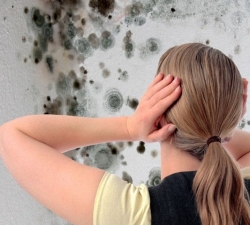
The basement in the house acts as an additional air gap, which allows you to maintain a normal temperature in residential premises and not to let dampness into the house. Therefore, it is very important to maintain the basement in good condition. The first enemy of this room is damp. This problem occurs especially in the offseason, when lifting groundwater. The dampness in the basement provokes the occurrence of fungi, which destroy all the objects and the walls of the room in the room. If the humidity level exceeds all existing norms, dampness reaches the first floor of the house. High -quality waterproofing of foundations and walls of the basement helps to avoid all these troubles.
Table of contents:
- Why is dampness in the basements occur
- Types of waterproofing
- Measures for external prevention of dampness in the basement
- Dismantling of blinding and digging trenches
- Analysis of the state of isolation and repair work
- Dismantling of old isolation and wall cleaning work
- Bitumen waterproofing
- Varieties of waterproofing from the inside of the basement
- Rules for performing penetrating isolation
Why is dampness in the basements occur
If the foci of dampness is detected, it is necessary to find their source first of all.
- Often these are some sections of waterproofing that have lost their properties over time or were originally incorrectly laid. Another reason is the wrong project of the foundation during the construction of the house, when the bottom plate lies under the level of groundwater. But even if it is designed correctly, sedimentary streams and meltwater affect the basis of the building, impregnating it with moisture.
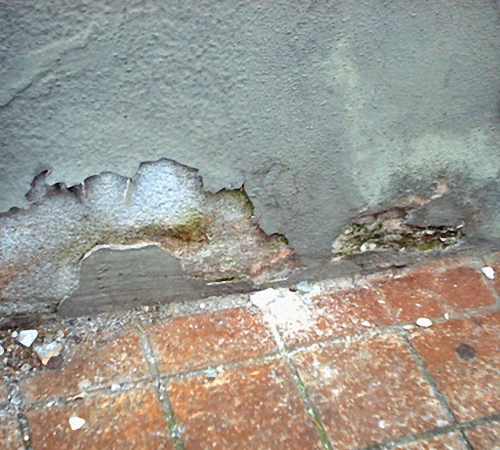
- Another possible reason for the incorrectly built or lost the integrity of the blind area. If moisture appears because of this, then it passes from the outside and external waterproofing of the basement walls is required. This process is complex and time -consuming, which provides for the broken blind area, digging the ditches over the walls of the foundation, work on waterproofing and erecting a new blind area and drainage.
- Condensate. It is formed due to the difference in temperature outside the room and inside. With an incorrect basement heating system, warm flows interact with lower temperature walls. The moisture contained in the air settles on cold surfaces. In this situation, external waterproofing, as well as an improved heating system, will be the output. If the basis of the structure of the steel frame from the reinforcement, internal waterproofing is also necessary.
Often there is a need to carry out waterproofing measures in rooms that are tightly adjacent to other buildings. These are separate extensions to a private house or garages in cooperatives that are built close to each other. In this case, there is no way to dig a trench to expose the walls of the foundation. For waterproofing in this situation, a point method is used, which will be described below.
Types of waterproofing
The main separation of waterproofing implies two types of work by vertical waterproofing and horizontal. Vertical waterproofing is painting when one or two layers of bitumen mastic are applied to the surface, or glow, when a roll material made on the basis of bitumen mastic is attached to the walls. Horizontal isolation is carried out using a solution of sand and cement, which is superimposed on the surface and strengthened on top with roller materials. When choosing a basement from water, you should rely on data on the level of groundwater relative to the lower part of the foundation:
- Low groundwater level in the building without a basement. The solution of sand and cement is laid with a layer of 20-30 mm. The solution is aligned and rolled materials are laid on it. The entire waterproofing system is located according to the cutting of the foundation at a height of the ground of 150-200 mm.
- Low groundwater level in a basement building. The laying of vertical or horizontal insulation is carried out. Three arrangement options:
- The insulation is equipped in the level of the floor. In the tape foundation, a solution of sand and cement in a ratio of 1: 2, a layer thickness of 20-30 mm is placed on the top of the plate.
- The insulation is equipped with the cutting of the foundation. Rolled materials are laid with an indentation of 15-20 cm from the ground, put on a leveled base.
- The walls of the room are painted with hot bitumen mastic.
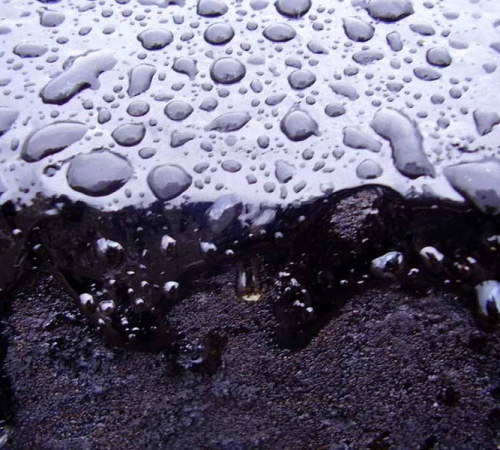
- High level of groundwater in the structure with the basement. In this case, three types of waterproofing are also applicable:
- Laying a solution of sand and cement with a thickness of 20-30 mm.
- Laying 1-2 layers of rolled materials on a leveled base.
- If the groundwater level reaches 0.2 m, then it is necessary to perform vertical insulation. To do this, lay on the base of 2-3 layers of isol on bitumen mastic. Also, a clay castle is equipped from oily wet clay.
Measures for external prevention of dampness in the basement
Symptoms of improper isolation of the outer side of the foundation are the accumulation of moisture, raw walls, leaks in the seams or between blocks. To remove these symptoms, it is necessary to carry out the following work:
- Dismantling the blind area around the perimeter of the house.
- Work on digging trenches along the foundation.
- Carrying out work on cleaning extra layers from the walls of the foundation.
- Stripping the crumbling layer using a perforator or metal brush.
- Waterproofing measures.
- Sprinking with sand or clay.
- The construction of a new blind area.
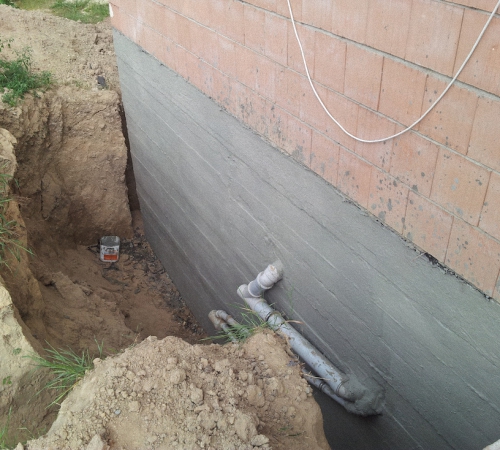
Dismantling of blinding and digging trenches
The waterproofing of the internal walls of the basement begins with cleaning the old blind area. These works are carried out using a professional punch with the necessary level of power or a jackhammer. If there are no indicated tools available, then by ordinary crowbar. The trench is dug in the width of the size that will be enough for all the necessary manipulations. Most often, this size is 50-70 cm. In the depths of the trench is dug up to the level of the lower plate. This indicator ranges from 70 to 150 cm.
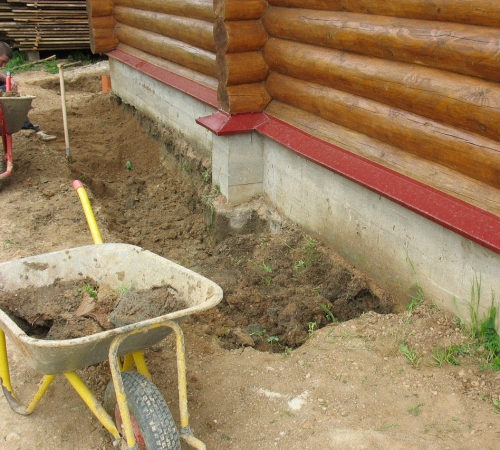
Analysis of the state of isolation and repair work
After the manufacture of the trench, the old insulation of the walls is examined. In some cases, there is no need to completely change the waterproofing, since it became unusable not in the entire area, but only in separate areas. In this case, materials similar to already laid waterproofing are taken, or the most similar material is selected. For example, if the old waterproofing is made of bitumen, then it is repaired by bitumen mastic. Cement or polymer-cement coating is repaired by mixtures based on minerals or mineral-polymers. It is optimal to use not just similar material, but even the material of the same brand.
The waterproofing coating is not subject to repair if it has a large number of cracks and various damage, the surface has many rotten areas. In this case, a complete dismantling of waterproofing is necessary, followed by its replacement with another material.
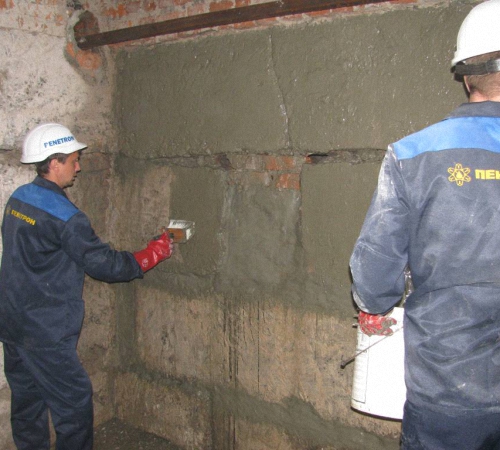
Dismantling of old isolation and wall cleaning work
If the waterproofing is made by mastic or bitumen and its condition is estimated as not critical, the layer is reliable, but there are some places that are damaged, the layer is restored. The problem areas are processed similar to the old coating by the composition, then 2 more waterproofing layers are applied to the entire surface. Before performing all the work, the old coating is carefully cleaned.
Initially, all damaged areas of insulation are removed, then all dust and large pollution are removed from the wall. Next, the surface is processed with a brush with a metal bristle or a grinder with a special nozzle. During the stripping, all parts of the isolation that are easily cleaned should be cleaned, must be completely cleaned. Not only thin layers are removed, but also quite large in area and depth of the region. The wall is cleaned to a monolithic layer of building materials.
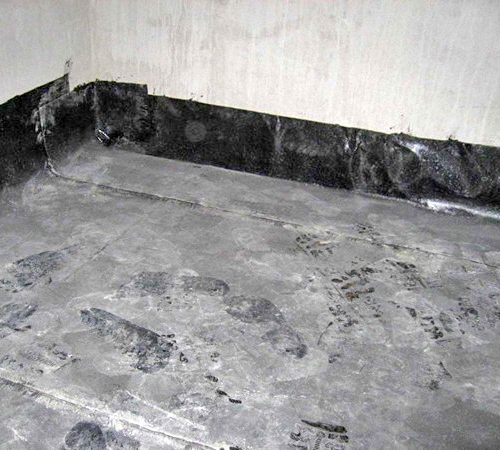
Bitumen waterproofing
When the surface of the wall is completely prepared and all unnecessary layers are removed, they begin directly to the treatment with waterproofing material. There are many waterproofing methods, but the most budgetary and easy to lay option is the bitumen mastic. This method is optimal for those people who do not have such experience. To process the surface will be needed:
- Bitumen mastic.
- Primer bitumen.
- Building brush is building.
- Respirator.
- White Spirit.
Before laying the insulation, the wall is once again sophisticated from sand and dust. A small layer of bitumen primer is applied to the cleaned area. It is applied in the same way as ordinary water -based paint. The thickness of the layer is determined by color, which should be rich in black. If the color is not dark enough, you need to add another layer. The primer is left until completely dry, in these works it plays the role of primer impregnation.
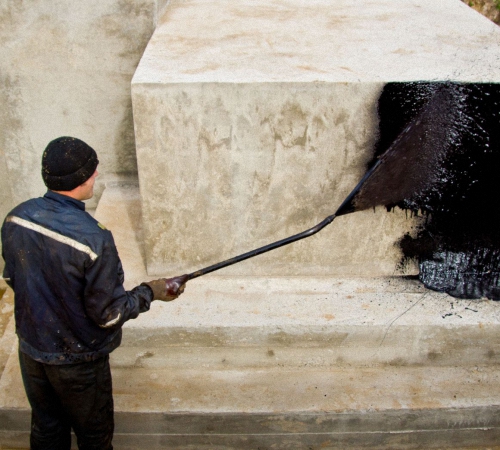
After the primer dries completely, mastic is applied to him. Most often, the mixture is already sold to use, but if its density is high to perform work, then a little white spirit is added. Diluted mastic is thoroughly mixed. The operating temperature of the mastic is 40-50 ° C, heat it right in the bucket. Apply the material with a brush or roller, use a spatula for leveling. The mastic completely dries in a day, at low temperatures, this period increases to two days. After the first layer dries, the second is applied. Vertical waterproofing of the basement walls is completed.
Before filling the trench, it is necessary to consider the ability to carry out thermal insulation. This measure will make the room warmer and will become an additional protection against condensate. External thermal insulation is carried out by polystyrene or polystyrene foam. Sheets are attached around the entire perimeter of the foundation.
Varieties of waterproofing from the inside of the basement
With the penetration of moisture outside, the accumulation of dampness inside the basement will also help waterproofing the basement walls from the inside. This method, as already indicated above, is recommended if it is not possible to get to the outside of the foundation. There are two penetrating or injection options for internal isolation options.
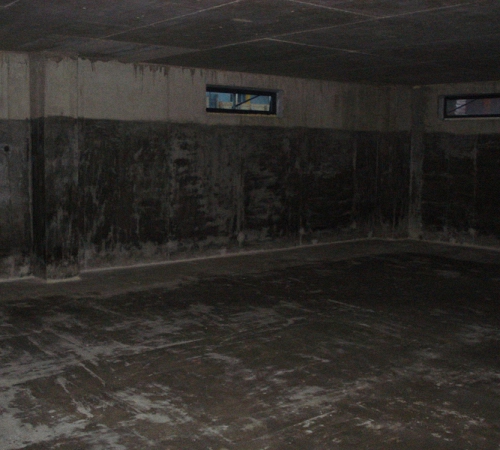
Injection isolation is the simplest, applied when a small amount of condensate appears. It is performed using fine bitumen, it is used as the basis for external insulation described in the previous section. It is not recommended to use mastic in a living room, since it is made with the addition of organic solvents.
Rules for performing penetrating isolation
If the concentration of condensate is high or groundwater penetrates the room, rising above the floor level, more capital waterproofing work is needed. This applies to both the waterproofing of the brick walls of the basements from the inside, and work on other building materials. In this case, penetrating isolation with penetrating compounds is performed.
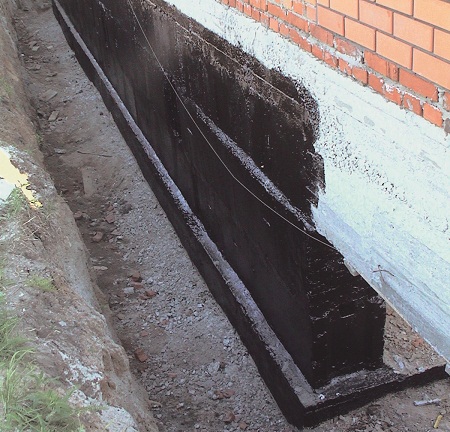
The work begins in the same way as external isolation is cleaned of the surface. All layers are removed to the base of the wall, then the building material is cleaned with a metal brush or a grinder. The walls collected from brick or blocks require additional work. They include removal from the seams of the old solution, the manufacture of the walls of the walls to the floor of the P-shaped page. The seams and the fine are filled with a repair mixture, for example, with stumpritis. Be sure to process the places of entry into the foundation of communication elements of pipes, outlets, etc.
The surface peeled from debris and dust is moisturized by a water -jet installation or a hose with a special nozzle. The waterproofing of the penetrating effect is applied only to the wet surface, a brush with a dense pile coating is used for application. The first layer is allowed to grab well and immediately begin to apply the second.
The floor is carried out in the same way. The only difference in the work on the floor after moisturizes remain puddles that should be removed. The sun's rays should not affect all surveys of surface processing, they are also protected from mechanical influences. After processing, all surfaces are moisturized for 10 days. This is done with a spray or simply delayed moisture, covering the surface with plastic film. The room maintains a temperature at a level of 50 ° C.
